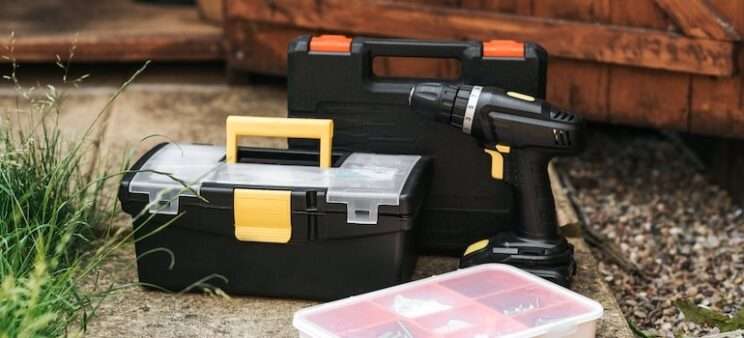Gardening is a valued activity for many, providing aesthetic and practical benefits. When relocating to a new home, safely packing and moving your garden tools becomes a primary concern. Often sharp and uniquely shaped, these tools require careful handling to remain undamaged and continue functioning effectively. Moreover, appropriate packing ensures the safety of those handling these tools during the move. This guide provides steps and tips for relocating their gardening equipment to help them transition smoothly to the new location.
Why It’s Important to Pack Garden Tools Safely
Packing garden tools carefully is about preserving the tools and broader safety and efficiency considerations. Garden tools, especially those with sharp or pointed edges, can pose a significant risk of injury if not packed properly. Damaged tools can lead to inefficient gardening tasks or even render the tool useless. Also, improperly packed tools can damage other items during the move or even the interior of the moving vehicle. Individuals can also avoid potential financial implications of tool replacement or repairs by safely packing each tool. Taking the time to pack garden tools safely packing and moving your garden tools safeguards both the tools and the individuals involved in the moving process.
Dealing with Power Tools and Machinery
Power tools and machinery, including lawnmowers, weed eaters, and chainsaws, bring challenges when preparing for a move. It’s essential to drain any fuel from gas-powered tools to prevent leaks and potential fire hazards. Disrupting and safely storing batteries is paramount for electric tools to avoid accidental activation. Another significant step is securing any moving parts. That can be achieved with ropes, sturdy tape, or specially designed locks. By safeguarding that these tools are safely packed and immobilized, you’re one step closer to creating a portable garden that can be seamlessly set up in your new space. Proper handling of power tools and machinery ensures longevity and peace of mind during the transition.
Preparing Garden Tools for the Move
The initial step in safely packing and moving your garden tools is adequate preparation. Proper preparation ensures the longevity and functionality of each tool and simplifies the packing process. Before packing, each tool should be cleaned thoroughly to remove soil, plant residue, and any trapped moisture. This meticulous cleaning helps prevent rust and potential deterioration during the transition. Concurrently, a close inspection can identify any damages or worn-out parts that might require attention before the move. A well-prepared set of garden tools will be more straightforward to pack and transport, mitigating potential risks. In areas like Los Angeles, professional packing services in LA can be a game-changer, guaranteeing that your tools and other household items are packed meticulously and safely.

Handling Long-Handled Tools
Long-handled tools, such as rakes, spades, and hoes, often present unique challenges when safely packing and moving your garden tools. Due to their length and shape, they require special attention to ensure they don’t become unwieldy during transit. A proven method is bundling similar tools together using durable twine or tape, which helps keep them compact and manageable. Protecting the sharp or pointed ends is crucial. Protective caps, or even heavy-duty cardboard, can prevent potential injuries and damage to other items. In addition, labeling each bundled set not only aids in organization but also ensures a smoother unpacking process at the new location.
Safely Packing Small Hand Tools
When it comes to small hand tools, effective packing is vital to keep them organized and prevent any damage. Utilizing a toolbox or tote ensures they remain in one consolidated place and are easily accessible. To safeguard the sharp edges of tools like pruners or shears, bubble wrap or an old cloth can be used. Not only does this prevent potential injuries, but it also minimizes the chances of the tools causing damage to other items.
At the same time, one can enhance organization by grouping similar tools and bundling them with rubber bands or twine. An added tip is to reuse cardboard moving boxes for gardening in your new home. Such boxes can be transformed into temporary storage or makeshift planters, making the move sustainable and innovative.

Packing Liquid Garden Supplies
Liquid garden supplies, such as fertilizers, pesticides, and herbicides, demand specific care during moving. These substances can be harmful if spilled, making their secure packaging a priority in safely packing and moving your garden tools and supplies. Before packing, it’s essential to inspect each container for any signs of leaks or damage. A tight seal on all bottles and containers is critical to prevent potential spillage. Placing these liquid supplies in plastic bins or containers for an added protection layer can prevent accidental drips and keep them contained. Also, clear and accurate labeling of each container is crucial, especially for chemicals, to ensure that they are handled carefully and can be easily identified upon arrival at the new location.
Tips for the Moving Day
The moving day can be a whirlwind of activity, and it’s very important to have a strategy in place, especially when dealing with garden tools and supplies. One practical approach is to load garden tools last, assuring they are the first items to be unloaded and quickly accessible at the new location. This approach minimizes the time they spend packed away and reduces potential damage. Communication with movers about sharp tools or fragile items is also paramount to guarantee safe handling. Amidst all this, don’t forget about your potted plants. Choosing the right pots for your plants can ensure they remain stable during transit, preventing tip-overs and soil spillage.

Setting Up in Your New Home
Arriving at your new home marks the beginning of another chapter in your gardening journey. As you start to unpack, it’s crucial to inspect each tool for any damages that might have occurred during the move. Setting up organized storage for your tools from the outset will save time and effort in the long run. Consider designating specific areas or sheds for different types of tools. Perhaps invest in new storage solutions like wall racks or pegboards to maximize space and accessibility. Also, take this opportunity to assess your garden space and plan accordingly. Familiarizing yourself with the new environment, soil quality, and sunlight patterns can guide future gardening endeavors, harmonizing your tools and plants into their new habitat.
Final Thoughts
Safely packing and moving your garden tools is not just a logistical challenge. It’s also essential to ensure your gardening endeavors at your new home start on the right foot. By paying meticulous attention to each tool, you safeguard their longevity and your investment in them. Also, the methods and care with which you handle these tools reflect the value you place on your garden. As you settle into your new space, your effort in packing and moving will pay dividends, providing you with undamaged and ready-to-use tools. With these guidelines, you can ensure that the transition of your beloved garden tools is smooth, efficient, and free from unwarranted hassles.
Author’s Bio: Richard Warner is a writer and agent for Royal Moving and Storage California. He is passionate about nature and likes to spend his free time tending to his home garden with his wife and their two children
Photo Credits:
Featured Image
Garden tools on a wooden bench
Toolboxes
Two moving people loading a van
